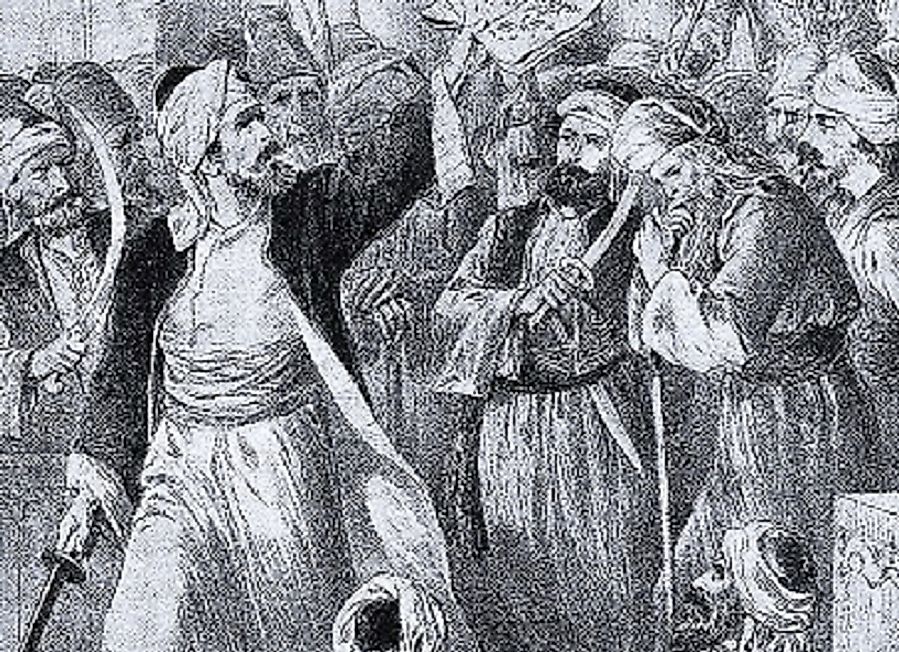Ottoman Empire: 1299 AD to 1923

5. Formation
The Ottoman Empire began in 1299 after an Oguz warrior named Ertugrul and his son, Osman Gazi, arrived at the Empire of Rum in Anatolia (Asia Minor) from Central Asia. Upon his arrival, Ertugrul helped Seljuk Sultan Kaihusrev II to defeat Mongolian invaders at Eskisehir, and in so doing helped to save Seljuk’s Empire of Rum. In return, Seljuk gave Ertugrul and his son a land strip stretching from Eskisehir to Sakarya, all of which was in what is present-day Turkey. It was there that Osman started a small empire he called the Principality of Osman. That was the foundation for the Ottoman Empire to come, of which Bursa became the capital. The name Osman was converted to English as Ottoman, or Othman later on. Further expansion of the Ottoman Empire was carried on by Osman’s son, Sultan Orhan Gazi, who lived from 1281 to 1359.
4. Rise To Prominence
After Osman’s son Orhan Gazi took power in 1326, the Ottoman Empire’s influence increased further, just as the Seljuk’s Empire of Rum was waning. Orhan took over the empire of Rum, and it became part of the Ottoman Empire. In 1354, Orhan and his army conquered more territories, including at Gallipoli and at Dardanelles, and established bases there. At that time, Orhan had the best, most professionally trained army in the world. Izmit and Karesi were then added to the Ottomans' territory after another battle, according to Ottoman History. The latter was added after Orhan’s army defeated the Byzantines. Other territories conquered were Angora (Ankara) from the Ahi tribe, and Cheembi Castle, Bolayir, Terkidag, Malkara, and Chorlou. After Orhan’s death, his son Murad I took over in 1360, and marched on to conquer Balkan territories in Kosovo and Bulgaria, Dobruja in Romania, Nicopolis in Greece, and all territories in Asia Minor.
3. Challenges
There were many challenges during the expansion of the Ottoman Empire. One of the most notable occurred to Murad I himself during the battle for Kosovo. While Murad I was inspecting the battlefields there in 1389, a Serbian knight named Milos Obilic ambushed and stabbed him. Another account by Ottoman History reports that Obilic stabbed Murad I in his tent. Obilic was later killed by members of Murad I's army. While dying, Murad I also witnessed the execution of the captured King Lazar of Serbia. Murad I’s son, Yildrim Bayazid, succeeded him that day. Bayazid’s reign would also come to be plagued by problems of its own, as he was defeated and captured by Mongols at the Battle of Ankara in 1402. He died in Mongol captivity in 1403, which, according to historical accounts, was due to psychological stress. This battle nearly resulted in collapse of the Ottoman Empire itself as well. After Murad I’s death, Bayezid’s three sons had an internal, 11-year-long, civil war which lasted until 1413 among their respective armies. Celebi Mehmet I, one of the three brothers, ultimately won, and reunited the then-divided Ottoman Empire.
2. Demise
The decline of the Ottoman Empire began in the reign of Sultan Selim II, which lasted from 1566 to 1574, after he succeeded his father, Suleiman I. Of all of the Ottoman Sultans who had ruled the empire, he was the most indifferent to its administration. Selim II was an alcoholic and a womanizer, and some historians attribute Selim II’s behavior to treatment of him by his father, who had shunned him as young boy growing up. Unlike his two more well-favored brothers, he never received any training in military and governance, as was the Ottoman Empire tradition for up-and-coming leaders. When Suleiman I’s reign was near its end, he gave government authority to the Grand Vezir and fell into depression. His depression was due to having his two favorite sons executed due to betrayal. When Selim II rose to power thereafter, corruption increased, while power struggles between elements of Ottoman authority, like the Supreme Court, military, Grand Vezir, and Janissaries, became commonplace. In the meantime, Europe was advancing technologically and militarily, while the empire itself stagnated. The Ottoman Empire was also hurt economically after losing its monopoly on the spice trade to European powers due to the discoveries of new trade routes. Due to the rapid decline, by 1800 the empire had been nicknamed the "Sick Man of Europe", according to Flow of History. World War I in the early 1900s was the final nail in the Ottoman Empire's coffin. It disintegrated thereafter, and its powers in the Middle East and Europe handed over to other governments.
1. Legacy In History
The Ottoman Empire's legacy is both treasured and loathed in equal measure. According to a study by Rutgers University, between 1914 and 1923 over 3.5 million Greeks, Armenians, Assyrians were killed under the successive Young Turks' and Mustafa Kemal's reigns. That genocide to date continues to be a thorny issue in Turkey. As the Armenian National Institute reports, 1 million Armenians perished in that genocide. Increasing Muslim territory by Jihad also came to the forefront during the Ottoman Empire. Still in modern day Turkey, the Ottoman Empire is credited with modernization, and having merged many traditions that today account for its diverse culture. According to BBC History, state-run education and an emphasis on creating strong armies was another hallmark of the Ottoman Empire. At its peak, the Ottoman Empire occupied Jordan, Romania, Hungary Turkey, Egypt, Greece, Syria, Bulgaria, Macedonia, Palestine, Lebanon, a section of Arabia, and most of the North Africa Mediterranean coast. It was also during Orhan’s reign over the Ottoman Empire that their iconic coins began to be used as currency.











